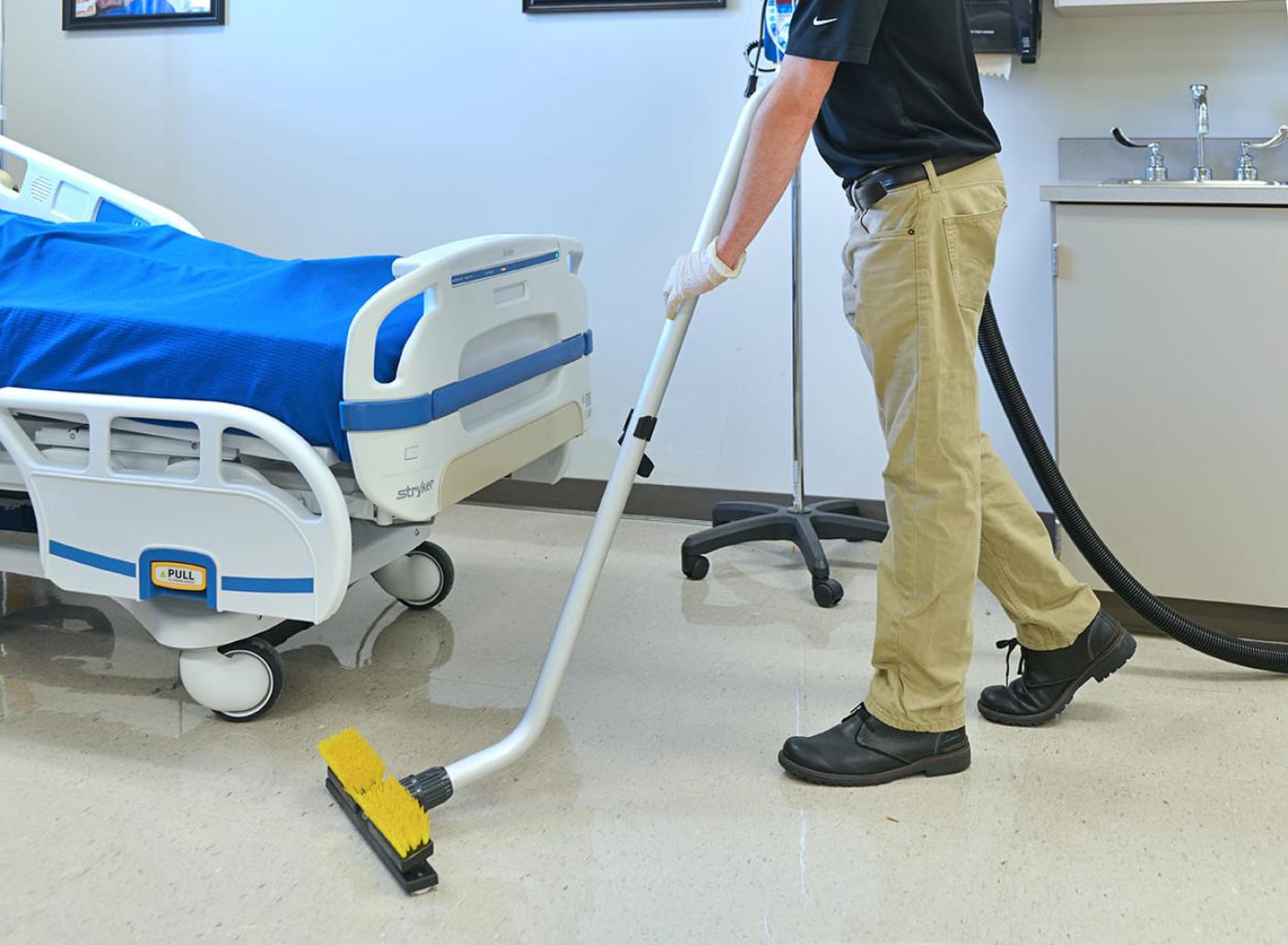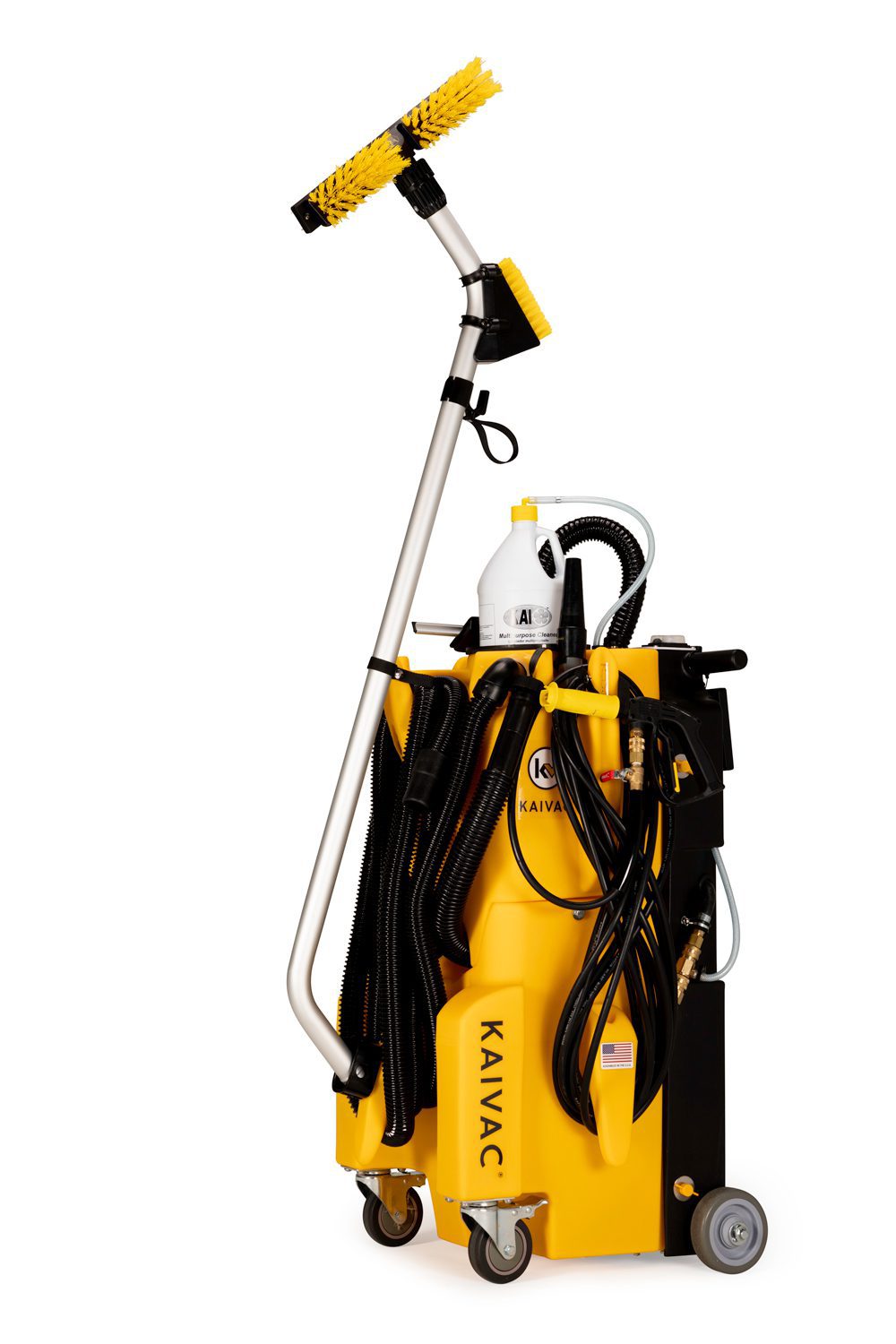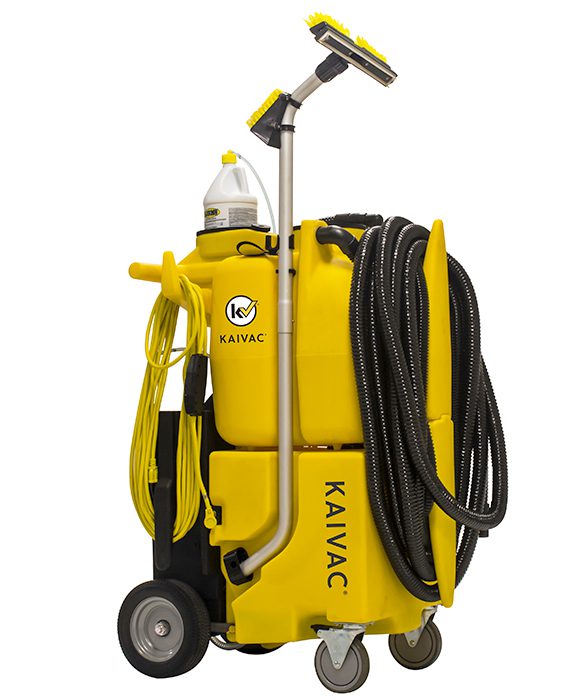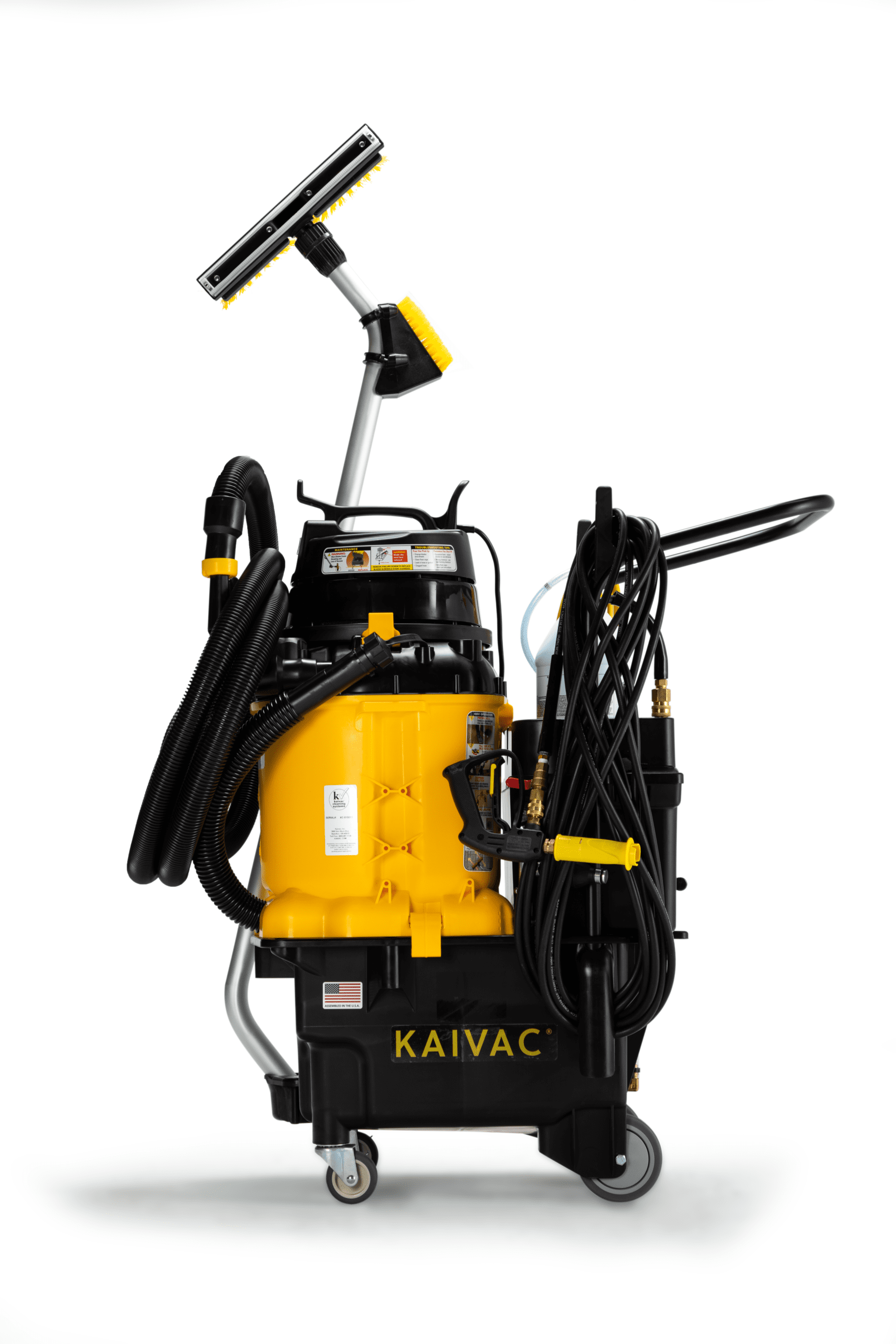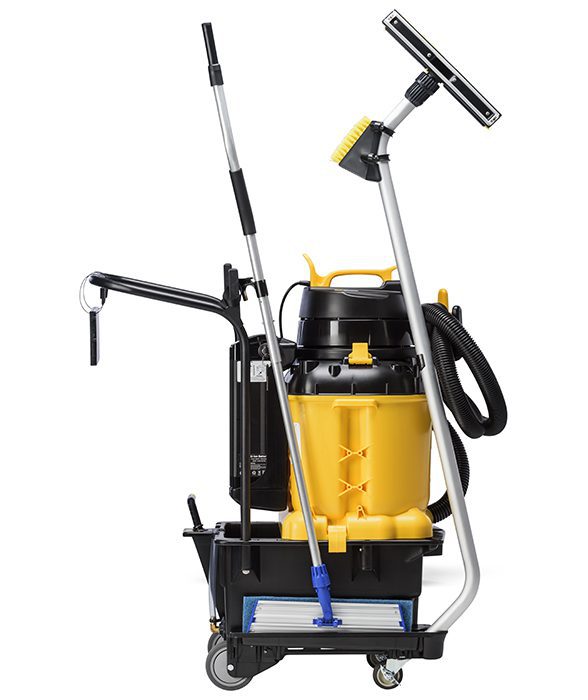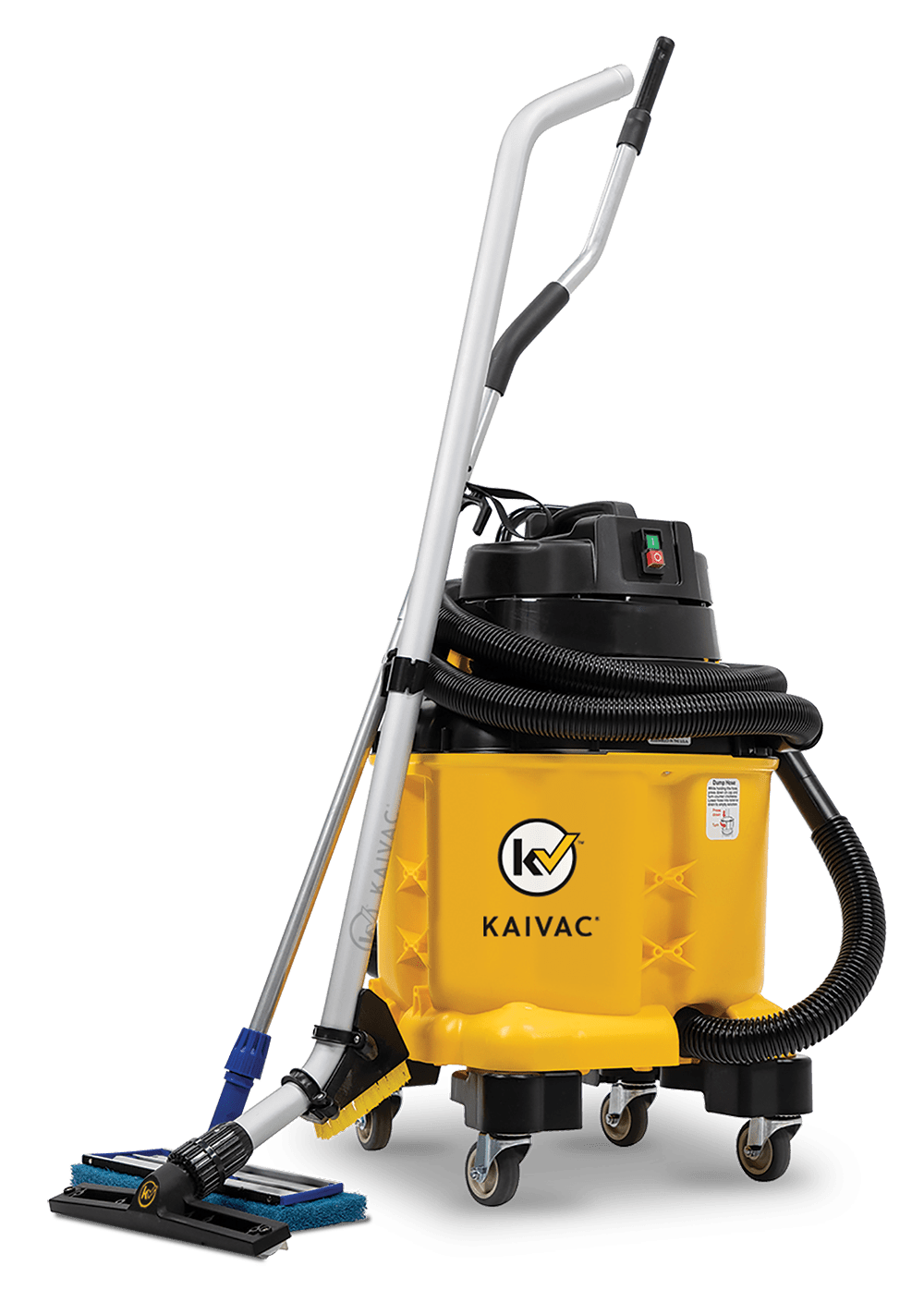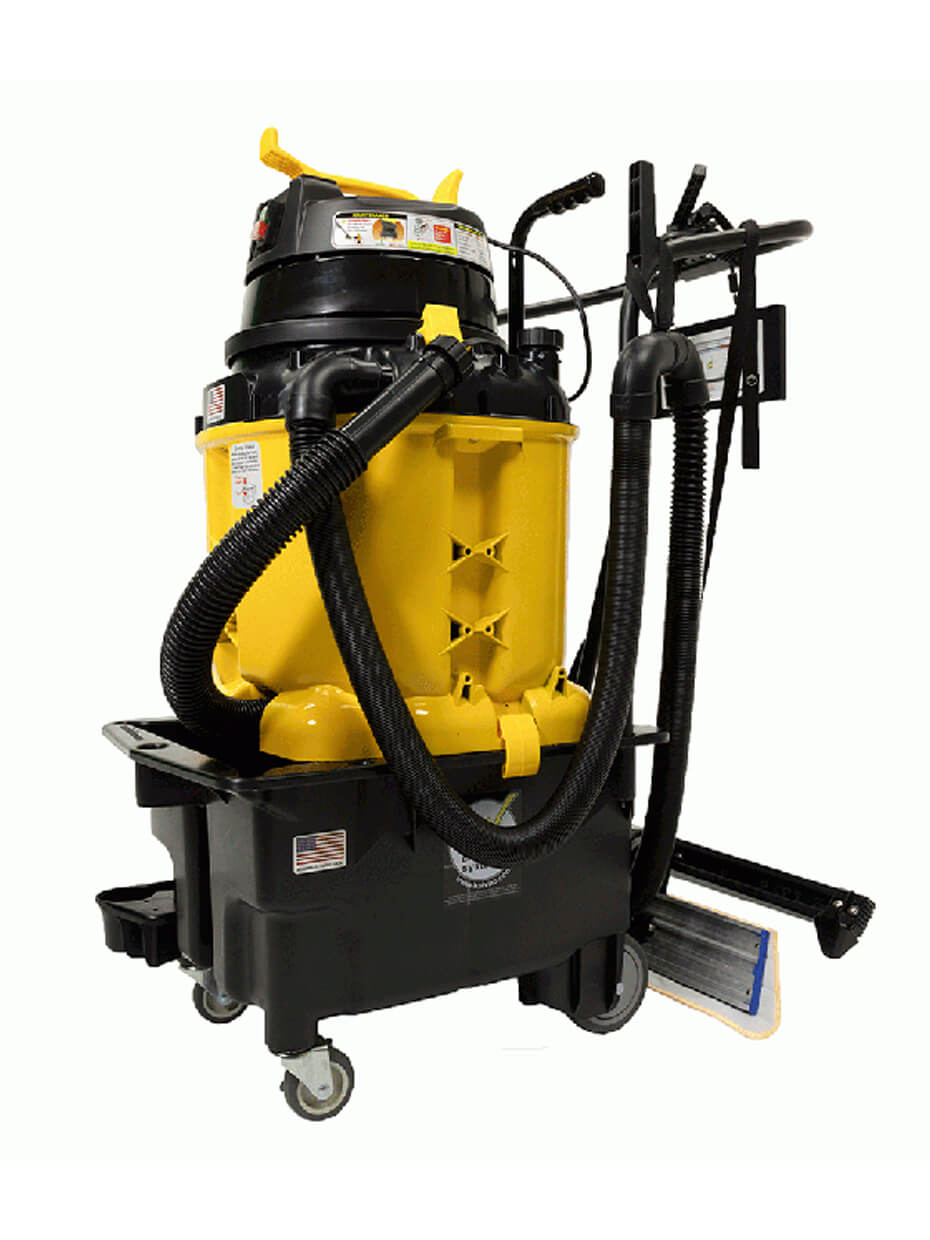Healthcare cleaning demands attention, precision and a well-trained staff. While the stakes are high in the proper maintenance of an office, school, hospitality or food service establishment, there is no room for error when it comes to keeping healthcare facilities clean. A poorly-cleaned facility poses a risk to patients, medical staff and visitors, while cleaning the facility incorrectly poses a risk to your janitorial staff.
‘The responsibility and risks inherent in these accounts should not be taken lightly,’ says William R. Griffin, president of Cleaning Consultant Services, Inc. in an article in Cleaning & Maintenance Management. ‘The possibility of illness, death, and liability looms if contractors do not follow proper procedures.’
Keep the public and your cleaning crew safe by following these cleaning tips for a healthy healthcare facility.
The Importance of Good Infection Control
On any given day, about one in 25 hospital patients has at least one healthcare-associated infection (HAI), according to the Center for Disease Control and Prevention. These HAIs, also known as nosocomial infections, are defined as an illness a patient picked up in the healthcare facility after admission. The most common types of HAIs include urinary tract infections, surgical site infections, gastroenteritis, meningitis and pneumonia.
Most HAIs are transmitted in intensive care units, which house the most vulnerable patients, but infection can happen anywhere in a health care facility. In fact, the CDC reports that 75% of C. difficile infections occur in people recently cared for in a doctor’s office. This nasty bacterium causes a range of symptoms from diarrhea to life-threatening colon infection and is linked to about 14,000 U.S. deaths every year, according to the report. Along with C. diff, there is also methicillin-resistant Staphylococcus aureus (MRSA) and vancomycin-resistant enterococci (VRE) to contend with.
The Double Costs of Poor Infection Prevention
Nosocomial infections have social costs as longer hospital stays, added illness and death emotionally tax patients and their families. But there is also a financial cost. In 2015 over 2500 hospitals were fined a total of $420 million in penalties due to HAIs, according to an article in CleanLink. These fines are part of a mandatory pay-for-performance program established under federal health law. ‘We want hospitals focused on patient safety and we want them laser-focused on eliminating patient harm,’ says Dr. Patrick Conway, chief medical officer of the Centers for Medicare & Medicaid Services as reported by NPR.
Specialized Cleaning Standards Require Specialized Training
Cleaning crews play a vital role in infection control in healthcare settings. Because of this, intensive and ongoing training is paramount. Work must be tracked and documented standard operating procedures followed. Cleaning results are often validated through testing with scientific instruments like an adenosine triphosphate (ATP) meter or other tool.
Because of the nature of the work, cleaning staff is also at risk of illness and injury. Not only are they potentially exposed to infectious materials, they must look out for used needles, broken glass and other sharps. They must know protocols around bodily fluids, what to do with medical waste and how to avoid slips, trips and falls.
Healthcare maintenance workers must also be trained in patient protocols. HIPAA and other privacy rules are cut and dry, but soft skills like sensitivity and empathy also needs to be addressed. Good ‘bedside manner’ training will not only make patients feel better but instill a sense of pride and ownership in the cleaning staff too.
Hospital Cleaning Procedures: Patient Rooms
There are three types of patient room cleaning: occupied, turnover and terminal.
Occupied patient room cleaning should start with a knock at the door. Enter slowly and greet patient using their name. Empty waste can and dust high surfaces. Sanitize surfaces and spot clean walls. Clean the bathroom as instructed. Then clean floors. Finally thank the patient and say goodbye.
Terminal cleaning is deep cleaning done at the end of each day, where needed. Infection Control Today outlines the following steps to clean a terminal patient room:
- Use an EPA-approved, hospital-grade disinfectant to clean the top, front and sides of the bed headboard, mattress, frame, side rails and between side rails
- Use same disinfectant on TV remote, nurse call devise and cord and all other touchpoints like tabletops, drawer pulls, inner drawer, phones armchairs, door handles, and light switches.
- Clean bathroom starting with sink and counter areas first. Clean support bars and shower fixtures. Clean toilet last.
- Remove and double bag privacy curtains.
- Clean and disinfect clinical equipment before moving to the sterile processing department.
- After terminal cleaning, remove gloves without touching the outside. Wash hands with antimicrobial soap and water before putting on a new set of gloves.
- Use the CDC provided environmental checklist for monitoring terminal cleaning.
Turnover cleaning follows the same procedure, but is done between patient change outs.
Medical Office Cleaning Procedures
While hospitals and other acute care locations must follow strict infection prevention guidelines, the same cannot be said for doctor’s offices, according to Dr. Kim LaFrenier. ‘These facilities have no ‘zone’ that is exclusively dedicated to a patient,’ she writes. The result is a space that is more vulnerable to germ contamination. The problem is compounded as successions of patients move quickly through the exam room, decreasing the likelihood of thorough, post-patient cleaning.
To keep occupants safe, instruct staff to wipe down exam tables and furniture with a disposable, disinfectant wipe. These wipes can also be used on common touchpoints like doorknobs, soap dispensers, light switches, computer keyboards and cabinet pulls. Mopping floors in-between patients is neither practical nor effective as the technique leaves dirt and pathogens behind. Consider a floor cleaning system that fully removes soils and leaves floor dry and ready to walk on.
Nursing Home Cleaning Challenges and Solutions
Nursing homes and other long-term care facilities pose unique challenges for cleaning crews. Residents often have compromised immune systems, making the removal of contaminated soils very important. Instruct staff on how to avoid cross contamination and provide tools like color-coded and numbered microfiber towels to make the job easier.
Seniors are often sensitive to harsh chemicals so try to limit their use in cleaning. Often nursing home staff use strong chemicals and/or air fresheners to rid their facility of unpleasant odors. A better choice is to remove contaminants fully with technology that demands less harsh chemicals.
Want to learn more about tools and techniques for better healthcare cleaning?
